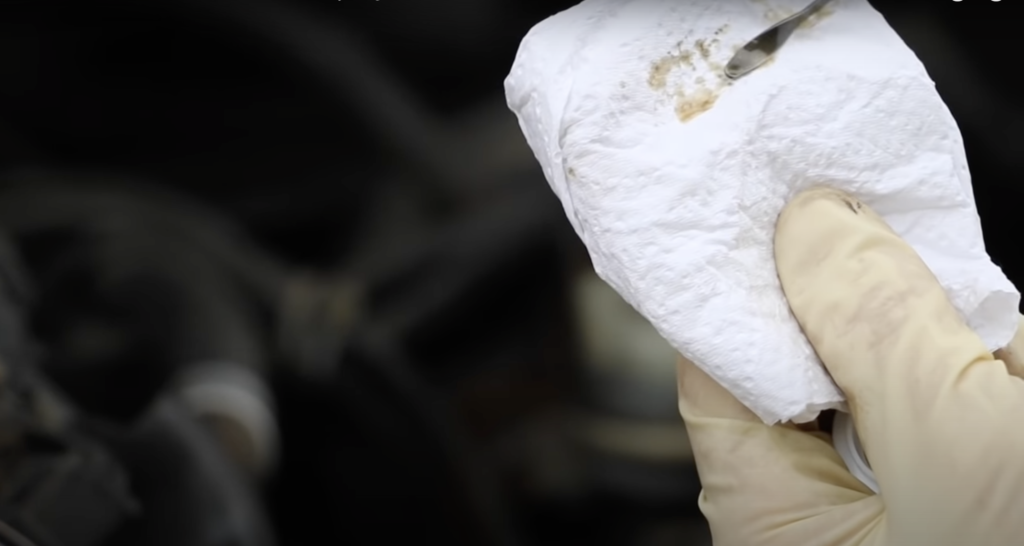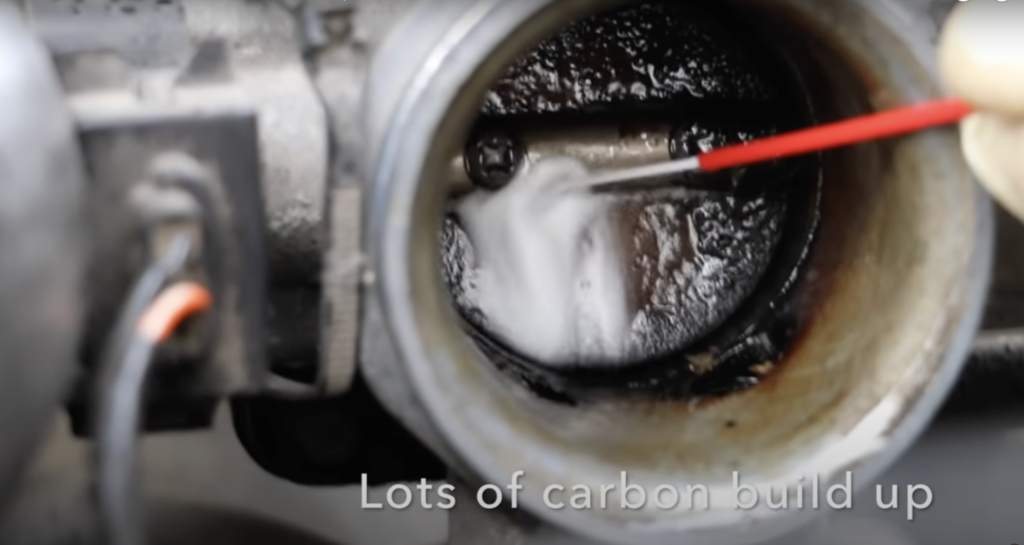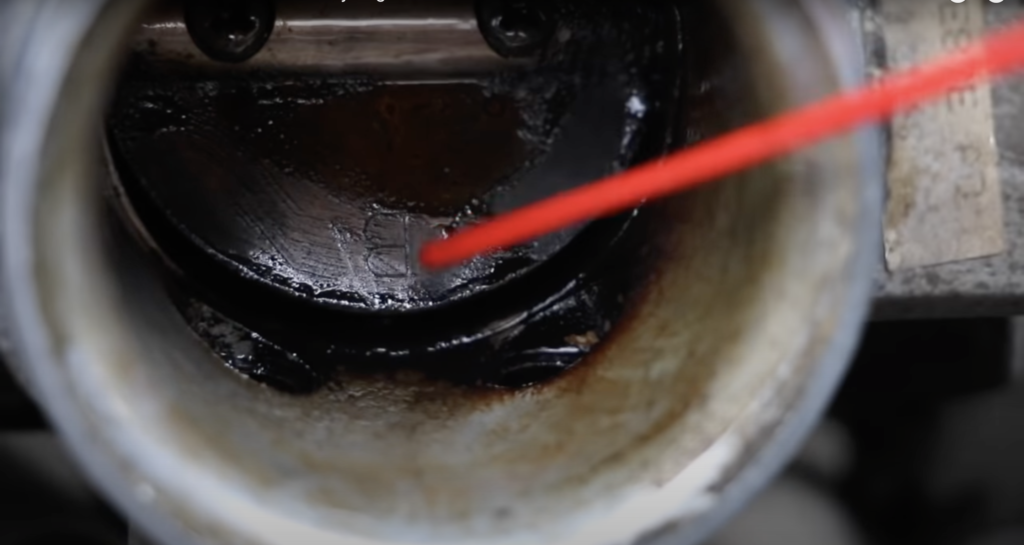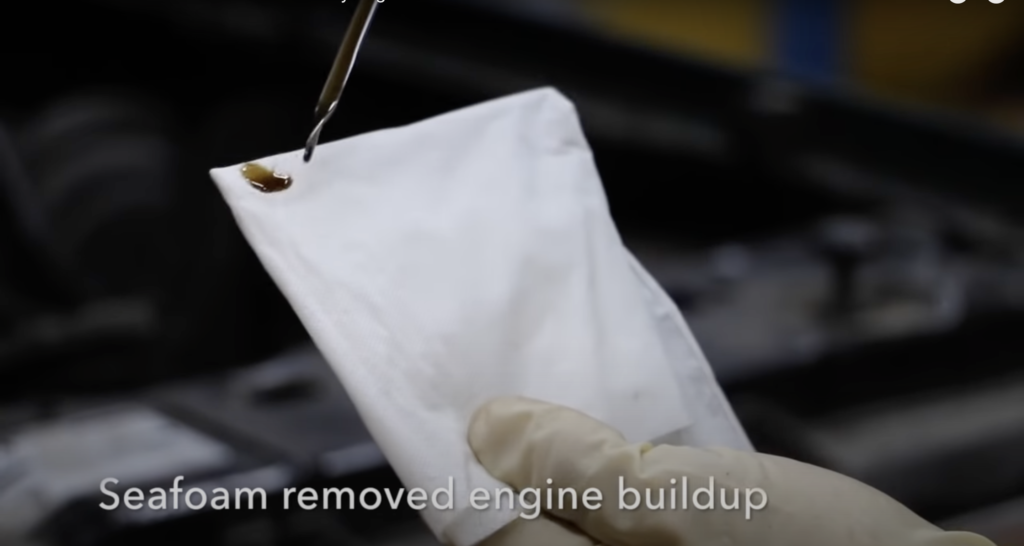Today I am going to do a little work on this Ford Ranger. I’m going to test out some SeaFoam. I have several things I’m going to work on.
The injectors need to be cleaned out, so I’m going to put a can of Seafoam in the tank, I have a sticking lifter, so I’m going to put a can inside the crankcase to see if that helps somewhat.
And I also want to clean out some of the carbon deposits on the cylinder so that today will be an experiment.
We’re going to try out a triple Seafoam treatment. Additionally, we will drain the oil after we do the Seafoam treatment. I will try some Lucas heavy-duty oil stabilizers to see if that will help quiet down the lifters.
This Seafoam says it cleans fuel injectors and carbon deposits due to deposit build-up control moisture in the fuel.
So this stuff’s supposed to work on the injectors. I will put a can of Seafoam inside the tank. It takes one ounce per gallon, and I have approximately 16 gallons; this is a 16-ounce can.
I’m going to start the engine so you can hear the amount of noise these lifters are making, but the lifters do make a lot of noise, probably due to a lot of wear in this engine.
This engine has about a hundred and sixty-seven thousand miles.
So I changed this oil not long ago. According to the seafoam instructions, I can add one ounce per quart of oil before or after an oil change, so I want to see how dirty this oil looks.

Then I will put the Seafoam in it, drive a few hours, and see if there’s any difference in coloration. This oil doesn’t look too bad; it’s hard to tell, but it doesn’t look like black oil.
According to the instructions, I’m supposed to add one ounce per quart of oil, so I will go ahead and add five ounces to my measuring cup. Okay, right at five ounces, I’m adding my five ounces of Seafoam into the crankcase.
The next step is to put the sea foam spray into the top of the engine as it’s running. According to instructions, I’m supposed to run the engine. It’s already warmed up.
I’m supposed to run it a little bit above the idol, so somewhere around 1,500 rpm, I’m supposed to spray the entire can until the can runs out, and once the can runs out, I’m supposed to shut it off and hot soak it for a while first thing I need to do is remove the intake hose.
Hey, the can is empty. I noticed towards the end of spring the Seafoam into the engine. I was starting to get a lot of smoke out of the exhaust.
So this is an oil-based or petroleum-based product, a lot of just oil burning off hopefully, some of that was the carbon deposits on the Pistons that’s burn it off, but soon we will find out.
The throttle plate was full of carbon deposits, and the Seafoam did an excellent job cleaning up the carbon deposits.

Now the metal is not shiny, so some traces of carbon are left on the throttle plate, but it broke up many carbon deposits when I sprayed it against the throttle plate.
It’s been about ten minutes, so I will go ahead and start the truck. It’s been about 24 hours since I treated the engine with Seafoam, and to recap what we’ve done, we’ve added Seafoam to the tank.
We may add a seafoam to the crankcase, and we’ve also treated it. So today, I want to pull the dipstick, look at the oil, see what it looks like, and see how dark it is. Additionally, I want to drain the oil and closely examine it.
The oil looks a lot darker than it did yesterday. Okay, I’m going to get this engine to start again. This engine has not been started in quite some time engine the engine is very cold, and it’s probably about 45 degrees in the shop.

It’s going to make some noise. It’s going to rattle. You’re going to hear it. A lot quieter as far as the lifter. I don’t hear the lifter at all.
I hear a slight tick inside the engine, but tiny; this’s way better, and I could tell after doing the treatment yesterday that I had much more low-end power than before.
It would stall out quickly as the standard shift and try to take off, it had very low-end power, so I’d have to get the RPMs up. This oil is the oil I just finished draining out of the crankcase.
I realized there are more scientific ways to look at this oil. A scientific approach would be to send this to an oil lab and analyze it for its chemical properties.
But what I will say is look at the world. It’s very dark. This oil has only three hours on it, so a lot of the sludge inside the engine has been freed up and drained out of the oil pan.

Also, I added about 5 ounces of the Seafoam, and one thing it did not do was not destroy the thickness of the oil. It still flows, so I will put in four quarts of oil and one quart of the Lucas.
The stuff is pretty thick! Wow, look at that stuff. It seems to stick supposed to slow oil leaks. It’s supposed to slow oil leaks.
It has all kinds of things it’s supposed to do; reduce friction for less wear, higher fuel mileage, and more power, ensure against oil breakdown in case of overheating, extend life by at least fifty percent, slow blow by for less pollution and oil contamination, raises oil pressure or will not sludge or varnish.




Leave a Reply